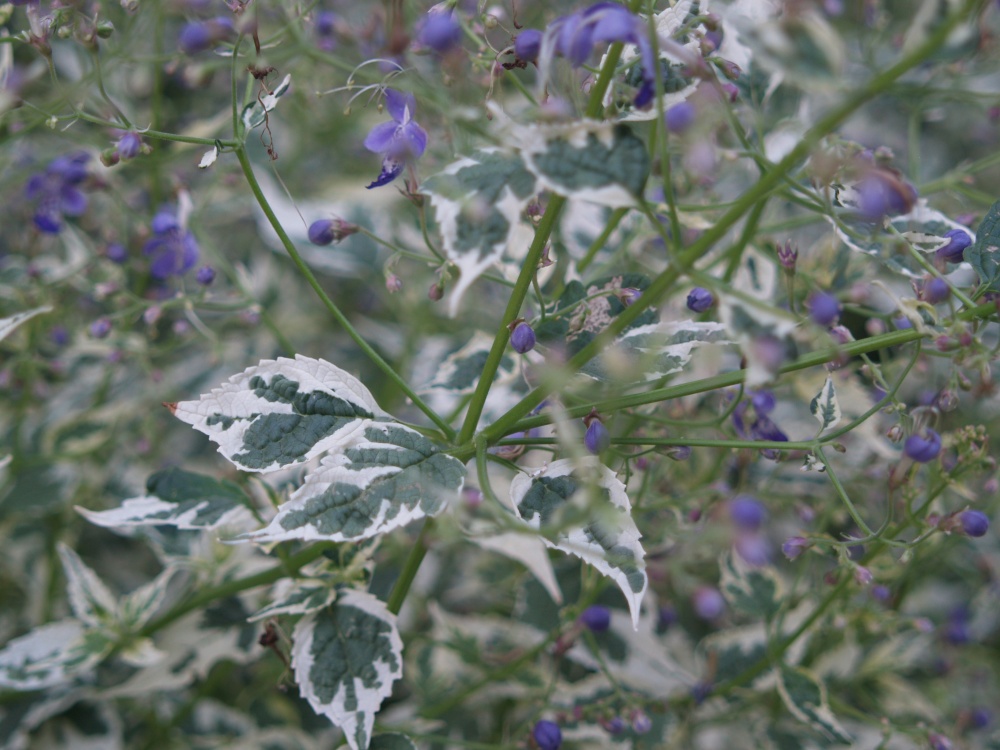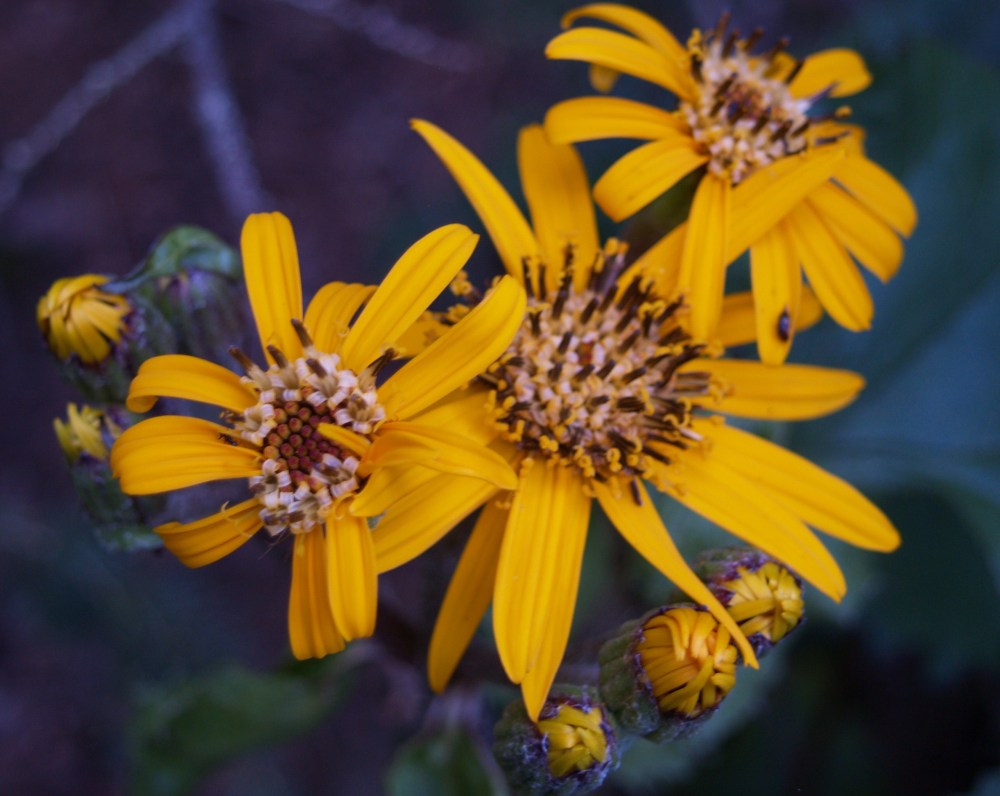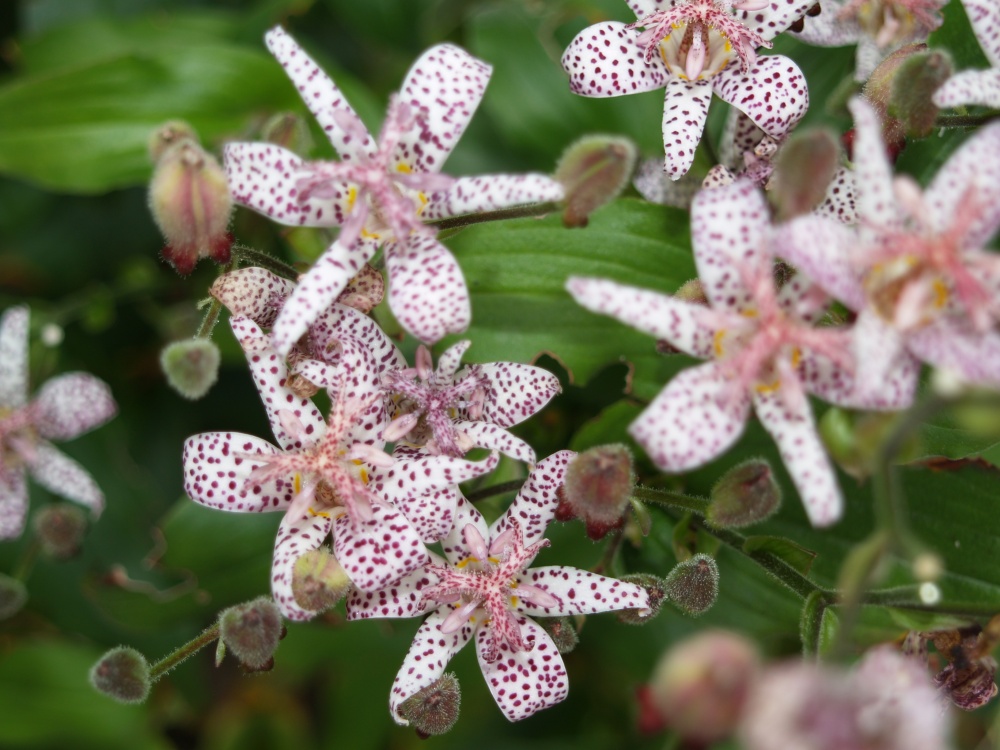Try as I might, I’ve had a hard time conjuring up bad vibes this late Summer. Several dry weeks in late July and early August fried the non-irrigated lawn, but I’d just as soon rip all the grass out anyway, so that’s not a bother.
One after the other through July and August I’ve had trees, shrubs, and perennials blooming in the garden. The progression must be good for my disposition, I’m not my usual grumbling, grouchy self (at least when I’m in the garden).
Given adequate space and a modest budget there’s no reason that any gardener in the mid-Atlantic can’t have flowers from March through November. And not just annuals, looking the same everyday from the time they’re set out until frost. 
With space enough for a small tree, crapemyrtles (above) provide large, colorful clusters of blooms for a month or more, and on most the foliage will color dramatically in October. There are varieties growing three feet to thirty, so no garden is too small for one, or several.
More difficult to procure, but well worth the hunt, are the Franklin Tree (Franklinia alatamaha, above) and Seven Sons Tree (Heptacodium miconioides, below), both blooming since early August and going strong in early September. Their attraction to bees and butterflies (and many other sorts of flying beasts) has been well documented by this journal in past weeks. 
The list of delightful shrubs blooming in mid to late Summer is long, and desirable for long lasting masses of blooms.  In my garden hydrangeas, huge blue and white mopheads (Hydrangea macrophylla, Penny Mac at left), Oakleaf (Hydrangea quercifolia), and pannicled hydrangeas (Hydrangea panniculata, below), fill the dog days of Summer with flowers.
In my garden hydrangeas, huge blue and white mopheads (Hydrangea macrophylla, Penny Mac at left), Oakleaf (Hydrangea quercifolia), and pannicled hydrangeas (Hydrangea panniculata, below), fill the dog days of Summer with flowers.
Blooming alongside are roses (Knockout roses in various flavors, several Drift groundcover roses, Carefree Sunshine,  and a few that I’ve lost the names of), butterfly bush (Buddleia, at left), Abelias, and caryopteris (yellow leafed Worcester Gold and Jason, and green-white variegated leaf Snow Fairy, below).
and a few that I’ve lost the names of), butterfly bush (Buddleia, at left), Abelias, and caryopteris (yellow leafed Worcester Gold and Jason, and green-white variegated leaf Snow Fairy, below).
 In the sunny garden it should be a simple matter to keep blooms through the late Summer with perennials. Coneflowers such as Rudbeckias (left) and Echinaceas (below) reach peak bloom when the temperatures are hottest, and often set new buds through September if the spent blooms are cut.
In the sunny garden it should be a simple matter to keep blooms through the late Summer with perennials. Coneflowers such as Rudbeckias (left) and Echinaceas (below) reach peak bloom when the temperatures are hottest, and often set new buds through September if the spent blooms are cut. 
Salvias, Russian Sage (Perovskia), and Sedums tolerate poor, dry soils, and flower for an extended period.
For the shady garden, Hostas, Japanese Anemones, Liriopes, Ligularia (Ligularia ‘Desdemona’ above), and Toadlilies (Tricyrtis, below) are few of the many choices blooming in July and August. Others are just beginning to flower in early September, leaving us much to explore in the coming weeks.
Sure to put a smile on your face.